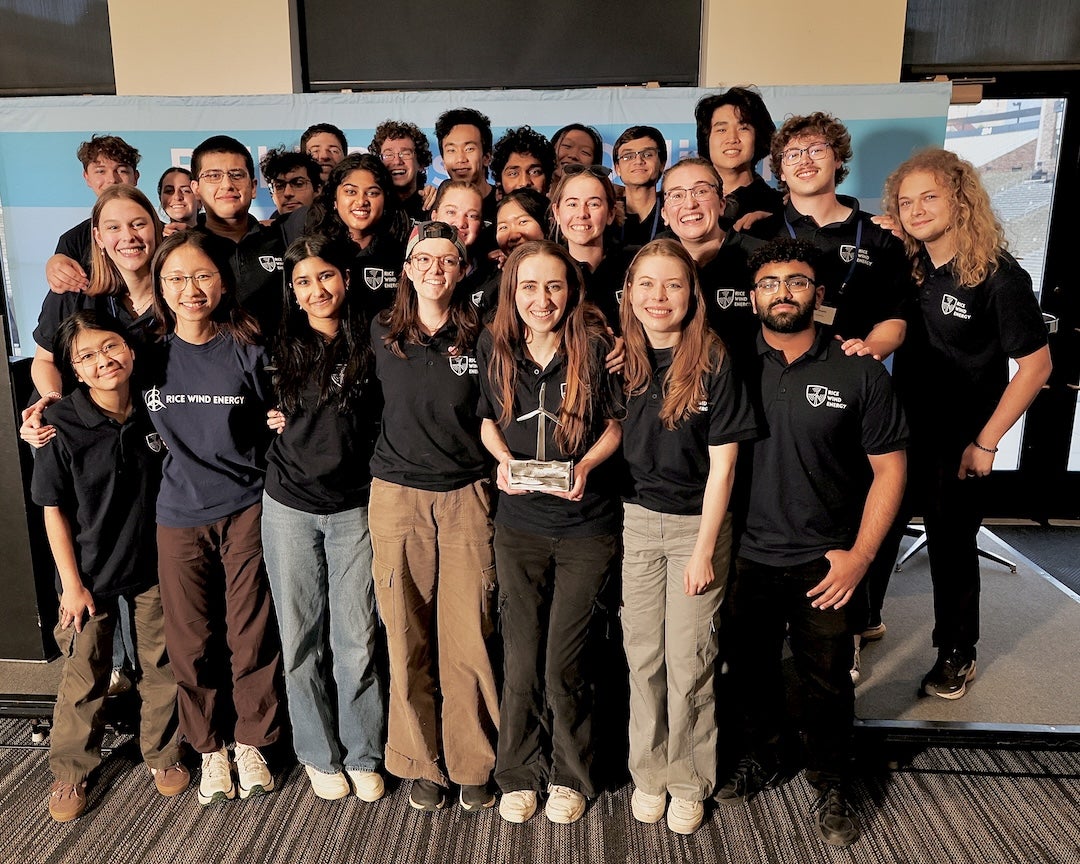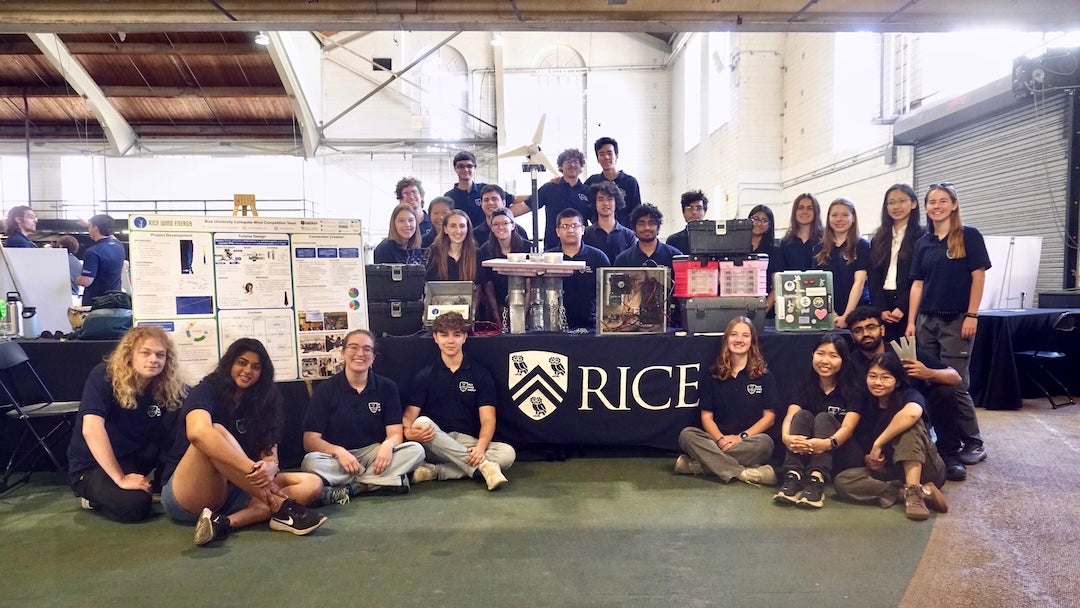
Rice University’s student-led Rice Wind Energy team soared to new heights this year, clinching second place overall at the U.S. Department of Energy’s 2025 Collegiate Wind Competition (CWC). Hosted by the National Renewable Energy Laboratories at the University of Colorado Boulder campus, the CWC challenges students from across the country to design and build wind turbines, develop wind energy projects and engage in public outreach to promote renewable energy. With over 40 teams entering the competition and only 12 advancing to the final stage, Rice’s second-place finish marks a milestone achievement for the fast-growing team.
“This accomplishment is a testament to our focus, teamwork and unwavering determination,” said senior Esther Fahel, Rice Wind Energy’s 2024-25 president. “It’s a remarkable experience to have watched this team progress from its inception to the competition podium. The passion and drive of Rice students is so palpable.”
Rice Wind Energy brought a powerhouse team of 26 students to the final stage of the competition, making them the largest team on site. The competition includes four core contests: Connection Creation, Turbine Design, Turbine Testing and Project Development. In the Connection Creation contest, Rice students launched a series of innovative initiatives that extended from campus to the broader Houston community and beyond. They hosted a wind energy panel with Texas Tech University, invited local high school students to campus for educational activities and produced a series of Instagram reels to address wind energy misconceptions. They also launched their first website and began regular outreach via LinkedIn.
Their efforts paid off in multiple categories, including a first-place win in the Connection Creation contest, recognizing their achievements in community and industry outreach. The team also placed third in Project Development, fourth in Turbine Testing and fifth in Turbine Design.

“I am amazed at the team’s growth in impact and collaboration over the past year,” said senior Ava Garrelts, the team’s Connection Creation lead for 2024-25. “It has been incredible to see our members develop their confidence by building tangible skills and lifelong connections. We are all honored to receive recognition for our work, but the entire experience has been just as rewarding.”
Rice’s performance in the technical contests also impressed. The team’s autonomous wind turbine and floating foundation design succeeded in producing over 20 watts of power in the wind tunnel, and they were one of the few teams to complete the rigorous safety test — bringing their turbine to below 10% of its operational speed within 10 seconds of pressing an emergency stop button and successfully restarting it using their custom controls and blade pitching system.
“I am proud of the team and the technical challenges we had to overcome to build a turbine that performed at such a high level,” said senior Izzie Driewer, the team’s chief engineer and generator lead. “Our hand-built generator was able to operate on the same level as the store-bought ones in other teams’ turbines.”
The team’s floating foundation also passed with full marks by staying afloat, maintaining tilt within the allowable threshold and performing within the designated boundaries without touching the tank’s edges, all without any human contact during installation.
“The Collegiate Wind Competition is such an incredible opportunity for students passionate about sustainability to gain industry-applicable, hands-on experience in the renewable energy space,” said senior and team vice president Jason Yang. “I would highly recommend it to anyone interested in the energy transition.”

The team’s project development group also played a critical role in their success. They designed a 450-megawatt floating wind farm located 38 kilometers off the coast of Oregon using a multi-decision criteria matrix to select the optimal site. They conducted technical modeling using publicly available industry software and identified 14 required state and federal permits. To support the financial viability of the project, the team created a comprehensive 30-year financing plan accounting for capital and operating costs, taxes and incentives, market conditions, depreciation, supply chain logistics and lease bids. The team compiled its design into a 23-page final report that also addressed a wide range of siting and environmental impact mitigation strategies, including bathymetry, available wind resources, site layout, local wildlife, native tribal interests and grid interconnection, among other considerations.
For many team members, Rice Wind Energy has become more than just a competition team — it’s a community.
“Since the days of working on our first wind turbine rotor, this team has always been a home to me,” said senior Raj Anthony, team marketing and development lead. “It is truly amazing to see it not only grow to become one of Rice’s largest student teams but achieve such great success.”
This year’s team credits much of their success to the support of their faculty and industry sponsors, including faculty sponsor David Trevas and faculty advisers Gary Woods and Jose Moreto. Industry sponsors Knape Associates, Hartzell Air Movement, NextEra Analytics, RWE Clean Energy, H&H Business Development and GE Vernova played a critical role in enabling the team’s work and travel. On-campus support came from the Oshman Engineering Design Kitchen, George R. Brown School of Engineering and Computing, Rice Engineering Alumni and Rice Center for Engineering Leadership.

